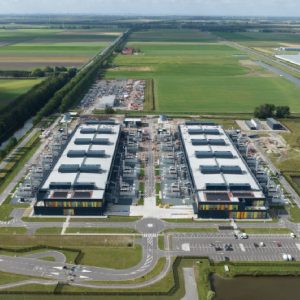
Billions of dollars are spent every year in the data centre industry with big colo firms such as Equinix and Digital Realty being among the big investors .
But where should a small, medium or larger enterprise look at building a new facility to keep data?
CBR looks at the top five places to build a data centre.
1. Nevada
There are more than three million data centres in the US using over 100 billion kilowatt-hours of electricity according to the country’s Department of Energy.
The majority of them are located in the New York region, but colo companies are looking at reducing costs and taking their facilities out of the Big Apple.
The most recent hot spot for data centres is the State of Nevada a few hours away from California. Earlier this year, the state’s senate approved a new bill that gives tax benefits to companies investing $250 million or more to build a data centre.
Nevada’s earthquake history is not a threat: in more than 300 years, the strongest shake occurred in October 3 1915 and measured 7.1 on the Ritcher scale. Although, smaller earthquakes of two to four on the scale are common.
The weather can reach some highs above 40 degrees Celsius during the summer, but not enough to bring a site down. The annual average temperature according to the US National Climatic Data Centre is between 15 and 30 degrees Celsius. Powering local businesses with solar energy is a good investment.
The United States as a whole has one of the world’s most advanced telecommunications network. It includes multiple ocean cable systems providing international connectivity satellite earth stations with 61 Intelsat (45 in the Atlantic Ocean and 16 in the Pacific Ocean), 5 Intersputnik (Atlantic Ocean region), and 4 Inmarsat (Pacific and Atlantic Ocean regions).
Switch was the latest company to announce the construction of a full three million sq ft facility in Tahoe Reno Industrial Centre, Nevada. The company will be investing $1 billion on the Supernap site, with the first stage of the project due to be concluded in early 2016. Switch will deploy 500 miles of fibre optic network to connect Reno with Las Vegas, Los Angeles, and San Francisco. Data will travel at a speed nearly three times faster than the speed of light, crossing the 500 miles in seven milliseconds.
Apple is another big player in the local data centre industry. The company set bases in Reno with its cloud data centre over four years ago, which the iPhone company ‘secretly expanding’ the hub this year. Apple is also committed to power its facilities with renewable energy and has invested millions to build a solar farm on site.
2. London
The UK is increasingly seeing more collocation sites being built. From Scotland’s Aberdeen to Manchester in England. But it is London that attracts the majority of data centres.
London has over 70 data centres, most in its two main locations of Slough and London Docklands where the central internet exchanges LINX and LoNAP are located offering the best connection between carriers and services.
Earthquakes in the UK happen every year, but the vast majority are not strong enough to even be felt. The risk of a data centre being destroyed due an earthquake is low.
London is 2000km away from the border of the Euroasian tectonic plate with the North American plate. The biggest recorded shake in Britain happened in June 7 1931, killing two people and had a magnitude of 6.1 on the Ritcher scale. This was the strongest event in more than 1,000 years.
Other natural disasters like hurricanes, tornadoes or heat waves are also not common and hardly would cause a modern data centre to be shut down. Although, special attention needs to be taken when it comes to floods.
The UK has a long record of flooding, and the Thames in the past ten years has scared many across its banks. The Docklands are more exposed to such event when compared to Slough, but the city’s Thames Barrier has kept waters away from the financial district since it was built.
3. Falun
Falun, a small city two hours away from Stockholm, Sweden, will be home to the latest Tier IV data centre in the world. The EcoDataCentre will also be the world’s first climate positive data centre and one of the safest.
The colo site will have an up-time of 100%, 1.15 of PUE and the 18MWs of energy are produced using the Sun, wind, water and bio fuels. The 23,250 sq mt of data centre space will spread across three buildings. The first phase is expected to be completed by 2016.
But why is Falun (or even Sweden as a whole) climbing higher in the charts?
Sweden has submarine cables to Norway, Finland, Iceland, Denmark. It connects to Europe satellite earth stations. There is one Intelsat (Atlantic Ocean), one Eutelsat, and one Inmarsat (Atlantic and Indian Ocean regions).
Earthquake are not a major threat. The latest occurrence was in September 2014, when a 4.1 on the Richer scale stroke after a 5.5 in 1904. Heat waves and other extreme weather are also very unlikely.
The cold air in the region is a plus.
4. Frankfurt
Germany is a world hub for telecommunications and Frankfurt is a key global financial centre.
If one is looking to build a ‘rechenzentrum’ in Germany for connectivity Frankfurt is the most likely option.
The city is home to the DE-CIX, Germany’s internet exchange, via which most of the country’s traffic is exchanged. A lot of traffic from other neighbour nations is also routed in Frankurt.
Germany has a large amount of land and undersea cable solutions as well as earth stations in the Inmarsat, Intelsat, Eutelsat, and Intersputnik satellite systems.
Like London, earthquakes and other natural disasters are very rare but flooding is a source of concern. Construction should never be made near the Main River and its confluents.
Several big industry players have set bases or have plans to do so in Frankfurt. AWS, Equinix, Interxion, Global Switch are just some of them.
As for data privacy, Germany and Finland have agreed to build a submarine link between Helsinki and Germany’s main cities. The Nordic state wants to store sensitive personal and financial data from several companies to protect their privacy.
5. Dublin
Dublin, and Ireland as a whole, tick many of the necessary boxes for data centre construction. The country offers special taxation to companies looking to set up a data centre and boost local economy.
The capital has attracted Amazon, Google, Microsoft, Apple and Facebook, which all together are spending more than $2 billion over the next two years to expand and build new infrastructures.
The country is a landing point for the Hibernia-Atlantic submarine cable with links to the US, Canada, and the UK satellite earth station Intelsat.
The weather, even though similar to other countries in Northern Europe, has been one of the main reasons for companies to settle grounds in Dublin. The cool air coming from the Atlantic and the Arctic help to reduce costs when it comes to cooling.
Ireland also does not have a record of natural disasters. In fact, the biggest threats in the country in the last 1,000 years where famines and epidemics. Since the thirteenth century, there have also only been four major earthquakes, with the strongest occurring in July 19 1984. It measured 5.4 on the Richter scale but did not cause any damages in Ireland.
Dublin is registering a boom in data centres construction set to foster in the next coming years. The region counts with some of the largest data centres in the world. In 2009, Microsoft built a 500,000 sq ft unit in Clondalkin and in 2011 Amazon transformed an old Tesco warehouse into a 240,000 sq ft colo site in Walkinstown.






